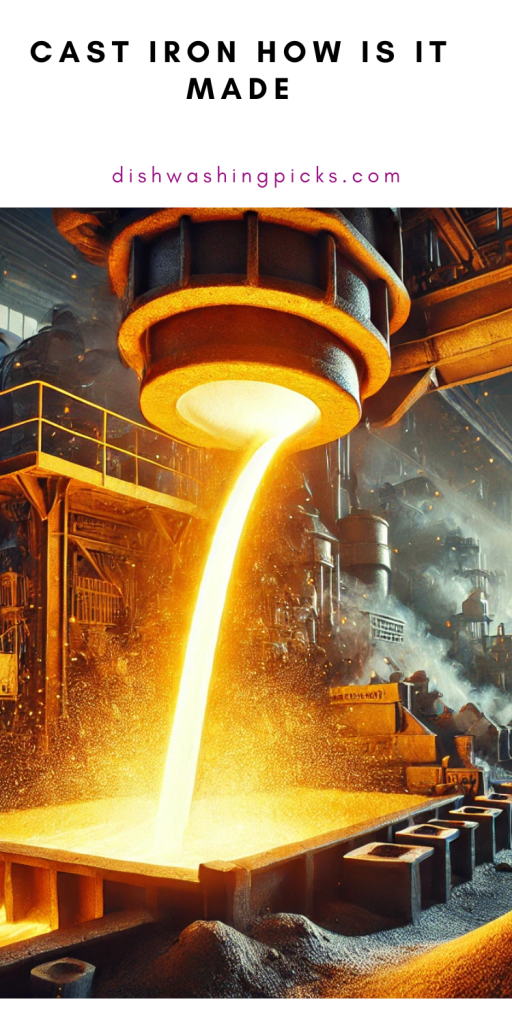Cast iron is one of the oldest and most durable materials used in cookware, construction, and machinery. But how is it made? The process involves melting iron, adding specific elements to enhance its properties, and casting it into molds. This guide breaks down the step-by-step process of making cast iron, from raw materials to the finished product.
1. Gathering Raw Materials
To make cast iron, manufacturers start with a combination of:
- Iron ore – The primary ingredient extracted from the earth.
- Coke (carbon source) – A type of purified coal used as a fuel.
- Limestone – Helps remove impurities from the molten iron.
- Scrap iron or steel – Recycled metals added to improve efficiency.
2. Melting the Iron
The raw materials are placed in a blast furnace, which is heated to 2,300-2,800°F (1,260-1,540°C). The intense heat melts the iron ore and separates impurities, forming molten iron.
3. Adjusting the Composition
Once melted, the iron is mixed with small amounts of carbon (2-4%), silicon, and other elements to improve its strength, durability, and casting properties. The exact composition depends on the type of cast iron being made:
- Gray Cast Iron – Contains more carbon, making it brittle but excellent for cookware and engine blocks.
- Ductile Cast Iron – Has added magnesium for flexibility and shock resistance.
- White Cast Iron – Hard and wear-resistant but less ductile.
4. Casting the Iron
Once the molten iron reaches the desired composition, it is poured into sand molds or permanent molds shaped to the final product. These molds create cookware, machine parts, pipes, and more.
5. Cooling and Solidifying
The iron cools and hardens inside the mold, taking its final shape. Cooling time varies depending on the size and thickness of the cast iron piece.
6. Cleaning and Finishing
Once cooled, the cast iron piece is removed from the mold and goes through:
- Grinding & Sandblasting – To smooth out rough edges.
- Heat Treatment – Some cast iron is heat-treated to improve its strength.
- Seasoning (for cookware) – Cookware is pre-seasoned with oil to create a natural non-stick surface.
Conclusion
The process of making cast iron combines ancient techniques with modern technology, creating durable and versatile products. Whether used for cooking, construction, or machinery, cast iron remains a valuable material with a rich history. Next time you cook in a cast iron skillet, you’ll appreciate the craftsmanship that went into making it!

